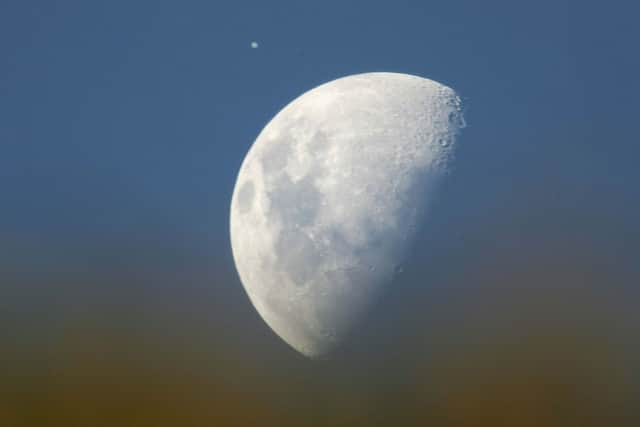How many moons does Jupiter have? Which ones will JUICE mission visit after ESA launch
and live on Freeview channel 276
The European Space Agency (ESA) will spend years observing Jupiter’s moons as part of the the Jupiter Icy Moons Explorer (JUICE) project.
The mission aims to send a satellite on an eight-year journey to Jupiter’s ocean-bearing moons to investigate their habitate and environment and see if they could support life. The largest planet in our solar system, Jupiter is home to between 80 and 95 moons, however, JUICE will be observing just three.
Advertisement
Hide AdAdvertisement
Hide AdThe project has a very small launch window of just one second long as Venus and Earth need to be in the perfect position for JUICE to perform a gravitational assist manoeuvre, which will see the craft use the gravity of the planets to pull it towards Jupiter. However, it will be a while until we see any results, with the first observations expected in 2032.
So, what is the aim of the JUICE mission, how many moons does Jupiter have and which ones will the spacecraft visit? Here’s everything you need to know.
How many moons does Jupiter have?
Jupiter is the largest planet in our solar system and according to NASA it has between 80 and 95 moons. The four biggest moons of Jupiter were the first to be discovered beyond earth and were observed by Galileo Galilei in 1610 who was credited with their discovery. However, German astronomer Simon Marius claimed to have seen them around the same time, but did not publish his findings.
Jupiter’s four largest moons are: Io, Europa, Ganymede and Callisto, it is believed they could be captured asteroids, whilst the smaller moons may be fragments from collisions.


Which moons will the JUICE mission visit?
Advertisement
Hide AdAdvertisement
Hide AdIt will take eight years before JUICE reaches Jupiter’s moons, the project will only observe the three ocean-bearing moons to see if they could support life.
According to the ESA, these are the three moons that Juice will visit and what the mission aims to discover.
Ganymede
The biggest moon in the solar system, Ganymede, is JUICE’s primary target. It is the only moon in our solar system that can generate its own magnetic field which they aim to explore alongside its hidden ocean, complex core, ice content, habitat and whether it could be a habitable environment. Juice will perform five Ganymede flybys between 2031 and 2032. The craft will end its mission after observing all three moons by crashing into Ganymede’s surface in 2035.
Europa
JUICE will conduct two flybys of Europa in July 2032 where it plans to explore the geology, surface and environment of what ESA have described as “ young, active, colourful”.
Callisto
Advertisement
Hide AdAdvertisement
Hide AdJUICE will complete a total of 21 flybys of Callisto between 2032 to 2034, coming as close as within 200 km at its nearest approach.
What is the JUICE mission?
The ESA’s JUICE mission will embark on a 4.1 billion-mile journey to observe three of Jupiter’s ocean-bearing moons to see if they could support life. The craft has 10 instruments on board to investigate the moon’s habitats, with scientists from Imperial College London leading development for one known as the magnetometer, which measures magnetic fields. However, it will be a while until we see the results of the mission, with the first observations of Jupiter’s moons not expected to be revealed until 2032.
Comment Guidelines
National World encourages reader discussion on our stories. User feedback, insights and back-and-forth exchanges add a rich layer of context to reporting. Please review our Community Guidelines before commenting.
